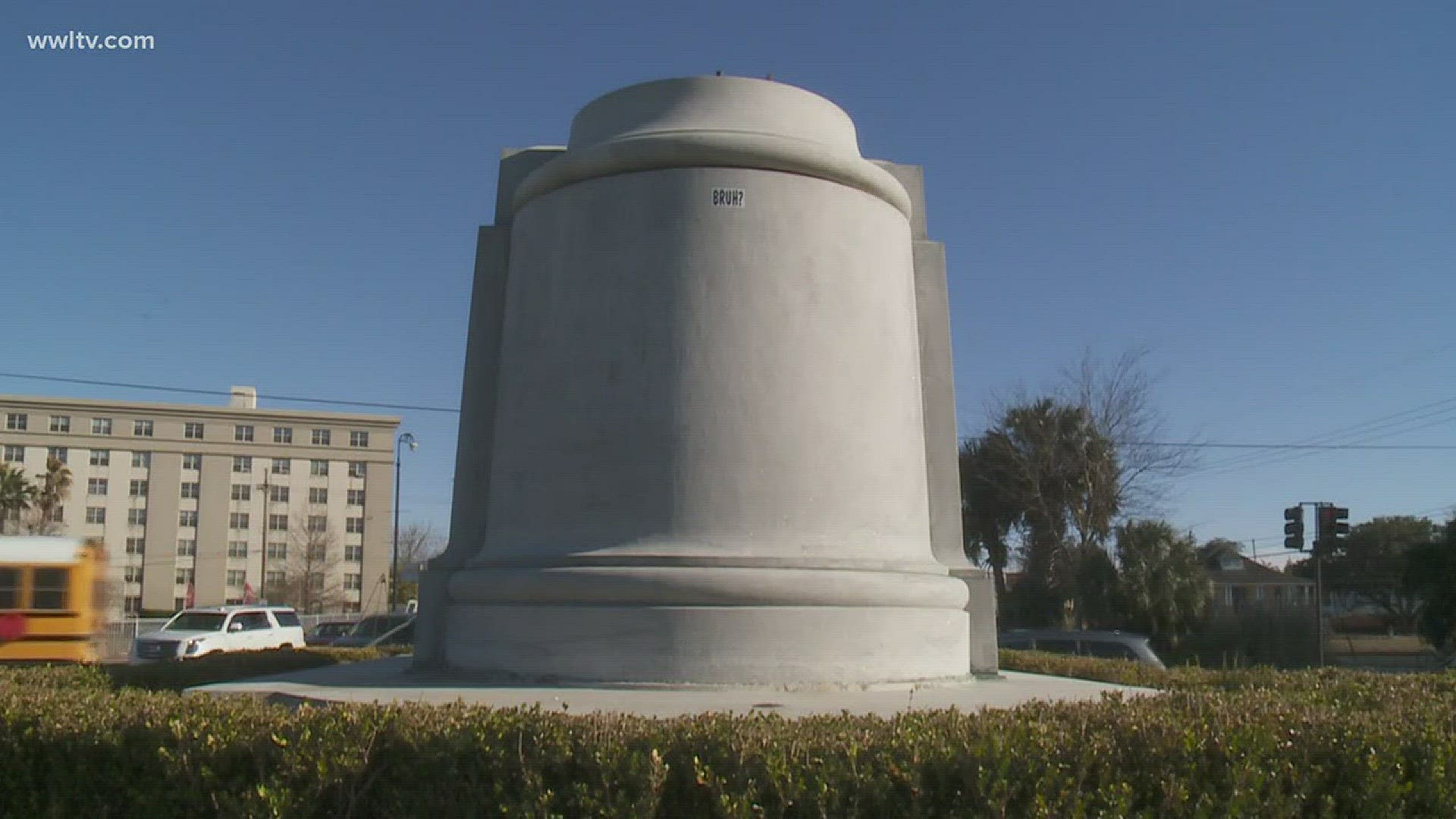NEW ORLEANS -- Just shy of a year since the city’s controversial decision to remove four Confederate monuments from their longtime locations, Mayor Mitch Landrieu on Wednesday announced plans for the sites where they sat.
The plans, though, leave several questions unanswered. Key among them: what will become of the monuments themselves.
Post-removal plans were supposed to be announced weeks after crews hauled the four statues away last April and May. Since then, that promise fell by the wayside, and other ideas that were discussed never came to fruition.
"The removal of the monuments took much longer and was harder than ever anticipated. Following the removal, the city needed a moment to pause and reflect,” Landrieu said in a prepared statement.
Landrieu said that before he leaves office on May 7, the city will perform “beautification” work at Lee Circle and leave in place the column on which the statue of the Confederate general stood.
He said the city will partner with the Foundation for Louisiana to begin a public process to figure out what should replace Lee.
Donations to that foundation were used to pay for much of the cost of removing the monuments. That kept most of the expense from being footed by taxpayers, but it also kept the public from learning who paid most of the cost.
The city said it expects an update on the future of Lee Circle by June but that a decision likely will not come until the fall.
The Ford Foundation will pay for the public process to decide the future of Lee Circle.
At the three other sites:
- An American flag will go where the statue of Confederate President Jefferson Davis once stood at Canal Street and South Jefferson Davis Parkway.
- The pedestal at the entrance to City Park on Bayou St. John where the statue of Gen. P.G.T. Beauregard was located will be removed and the area landscaped.
- The patch of grass behind the Westin Hotel where the Liberty Place monument stood will remain vacant.
The future of the statues and monument will, however, be another wait-and-see situation.
Landrieu said he will defer to Mayor-elect LaToya Cantrell and the next City Council for decisions on what to do with them.
“The process to relocate the four removed monuments should not be rushed,” Landrieu said. “Therefore, we trust that the next administration and City Council will have the appropriate time to begin and finish such a sensitive process."
A spokesman for Cantrell said minutes after Landrieu announced the plans that it was the first time the Cantrell transition team heard of them.
“The mayor-elect looks forward to an open, public and respectful discourse about the future of the four monuments and what was once the site of the statue of Robert E. Lee," said Mason Harrison, Cantrell’s communications director said a short time later.
The monuments have been stored in city warehouses or in impromptu sheds built over them after WWL-TV found them in a city junk yard following their removal.
Landrieu’s plans for the sites were announced days before he begins a tour to promote his new book, “In the Shadow of Statues: A White Southerner Confronts History.”
The book will be released March 20.
The official book launch will be March 21 in Brooklyn, New York, and include a discussion between Landrieu and writer Jelani Cobb, who profiled the mayor recently in The New Yorker.
Following that will be talks and signings March 26 in Atlanta, March 28 in Philadelphia and March 29 in Washington, D.C.
No local signing dates have been announced.
Aside from the monument removal, Landrieu’s book is his treatise on race relations in America, a wound he says has yet to heal.

